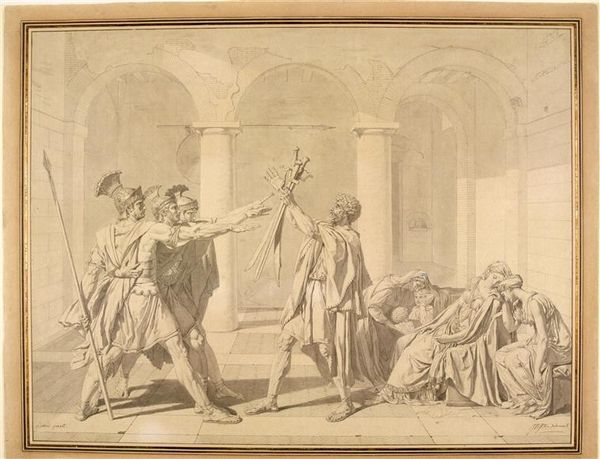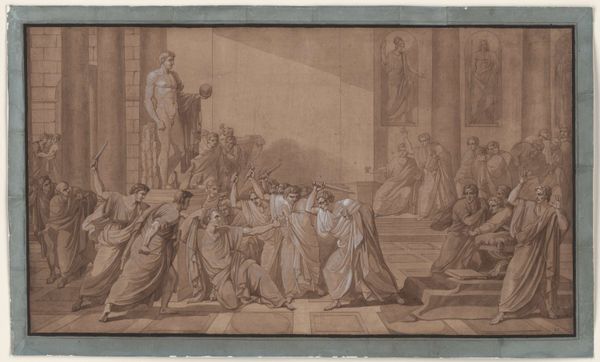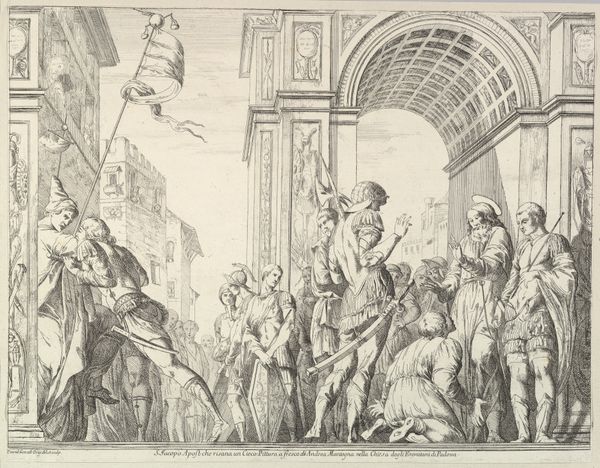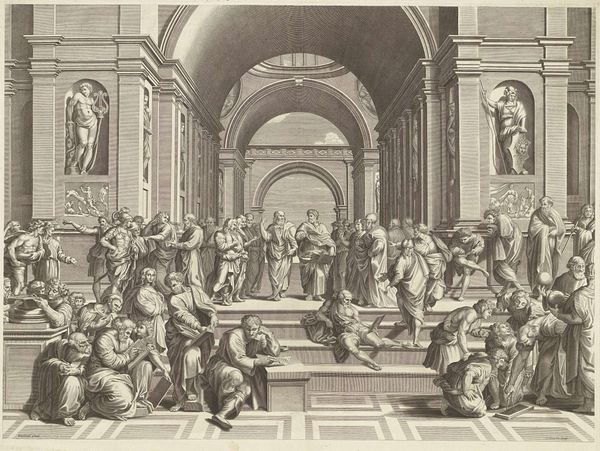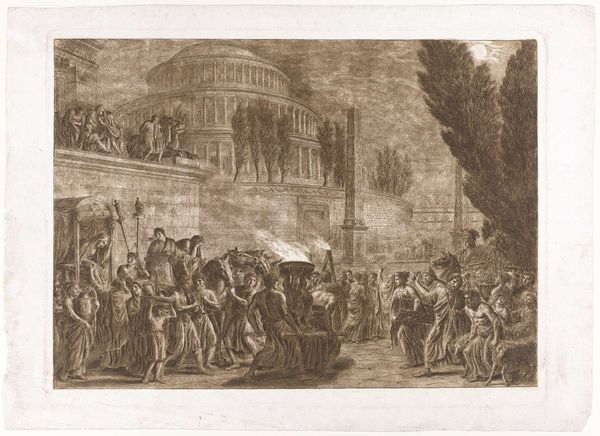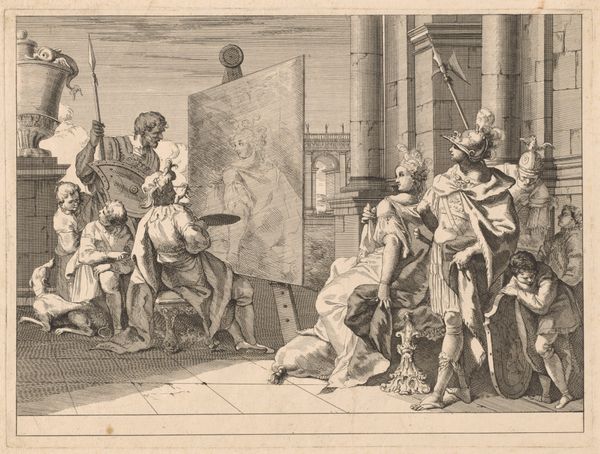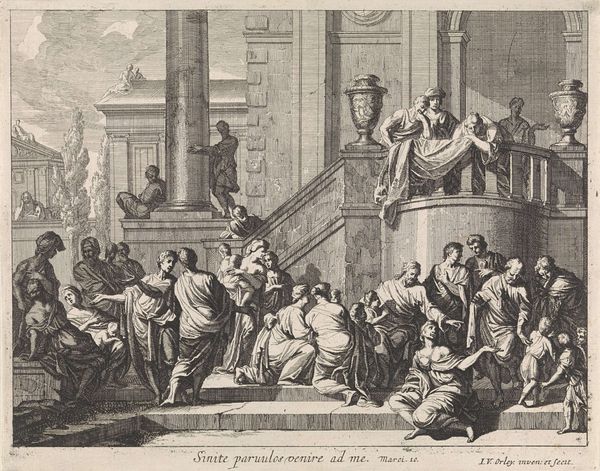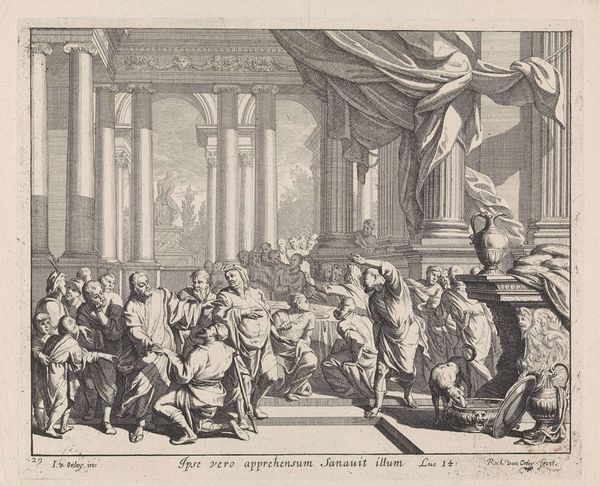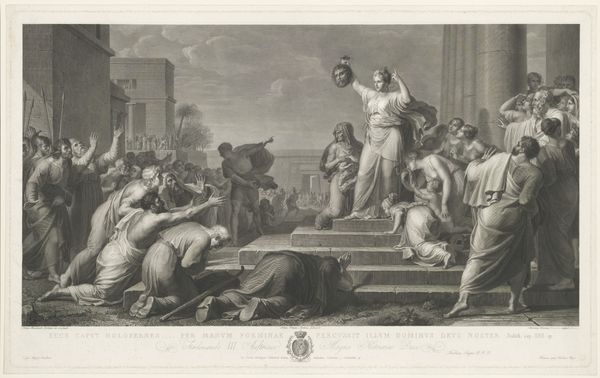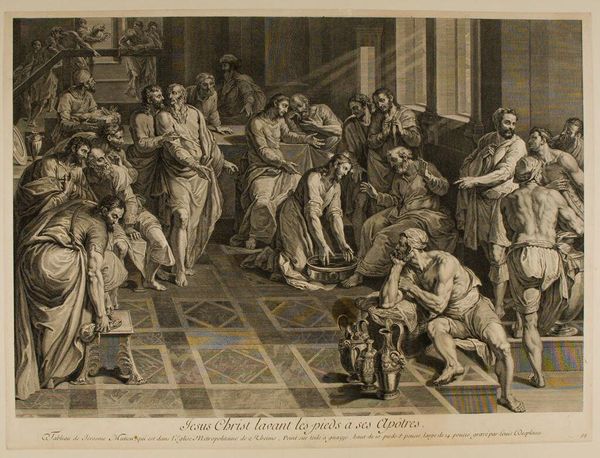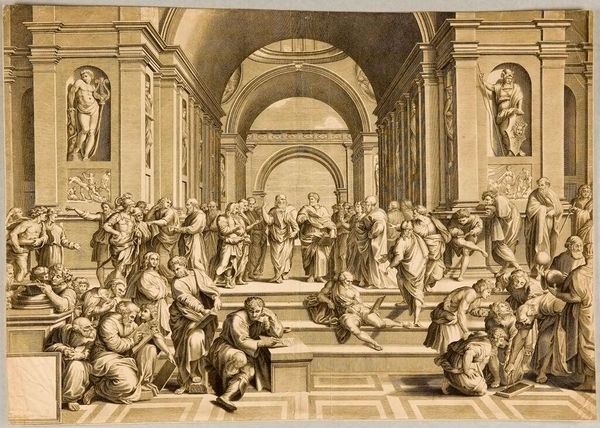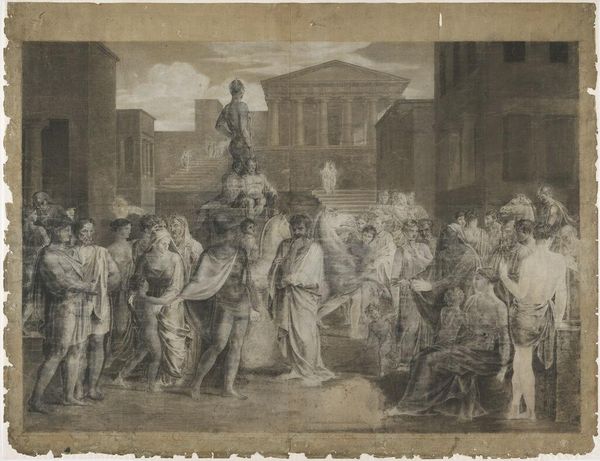
painting, textile, watercolor
#
water colours
#
baroque
#
painting
#
landscape
#
textile
#
watercolor
#
history-painting
#
italian-renaissance
Copyright: Public domain
Editor: This is Giovanni Battista Tiepolo’s, *The Reception of Henry III,* painted around 1750, now hanging in the Musée Jacquemart-André. It looks like watercolor, maybe even on textile? I’m immediately struck by the staging of the scene. The architecture feels like a theatrical backdrop. What do you see in its construction? Curator: Precisely! The architecture serves less as a spatial indicator and more as a framing device. Notice how Tiepolo uses the rhythm of the columns to compartmentalize the scene, directing the eye through a sequence of visual episodes. How does the colour palette impact this? Editor: The muted blues and pinks create an airy, dreamlike quality. There’s not a lot of strong contrast in colour to differentiate elements. Instead, the figures tend to blend in, which gives the impression that nothing stands out. Curator: An astute observation! It suppresses any specific figure or event, drawing the viewer into a web of complex compositional arrangements. Are we meant to focus on the subject, or how it’s organized within the pictorial space? What kind of relationship can we see between the figures, the architecture, and the hazy background landscape? Editor: They're all kind of equally weighted. There is a flattening effect from this approach that emphasizes the surface. By looking at it this way, it seems Tiepolo's priorities reside more within his formalistic goals rather than illustrative storytelling? Curator: Exactly. Here, the painting presents a meditation on pictorial organization itself. I wonder, now, if that changes your interpretation? Editor: Yes, definitely! Initially, I was expecting to focus on Henry III’s arrival and reception, but analyzing it structurally and formally reveals how much the surface itself contributes meaning! Thanks for that close looking! Curator: It's a testament to how close analysis enriches our understanding. Thinking through structure and organization opens many possibilities for a work like this one!
Comments
No comments
Be the first to comment and join the conversation on the ultimate creative platform.
